 Last week a dear non-profit friend of mine from California couldn’t sleep. She tossed and she turned. Ultimately, she got out of bed, turned on her computer and started talking into a microphone. When I woke up in the morning in my bed in Elgin, Illinois, there was an email sitting in my inbox with a voice file attachment. Her words have tumbled around in my head for a week, and I’ve decided to enlist your support in dissecting them.
Last week a dear non-profit friend of mine from California couldn’t sleep. She tossed and she turned. Ultimately, she got out of bed, turned on her computer and started talking into a microphone. When I woke up in the morning in my bed in Elgin, Illinois, there was an email sitting in my inbox with a voice file attachment. Her words have tumbled around in my head for a week, and I’ve decided to enlist your support in dissecting them.
The gist of her recording pertained to non-profit boards. Here is a synopsis of what she said:
- There are too many non-profit boards that just don’t work.
- Too many board members either don’t understand their roles/responsibilities or turn a blind eye to certain roles that make them feel uncomfortable (e.g fundraising and resource acquisition).
- Are there occupations that are better suited for non-profit board leadership (e.g. finance people compared to artists)?
- Should non-profit agencies incorporate personality testing into their board development process because certain personalities are better suited to serving on a non-profit board?
After a week of contemplative thought, I honestly don’t know how I feel about anything she said. I am looking forward to you weighing in with your thoughts using the comment box at the bottom of this blog.
Here is what I have concluded:
- Boardroom diversity is important. We don’t need all of the same types of people sitting around a table in a simulated echo chamber. (I am not implying that was what she was saying, but I do worry that it could be an unintended consequence.)
- Understanding roles/responsibilities and executing them are vital to non-profit health. The non-profit sector needs to get better at recruitment, management and evaluation or suffer the consequences.
- The characteristics and traits of an effective non-profit executive director (aka CEO) are changing with the times, and hiring the right person might make all the difference in the world when it comes to board development, board governance and team cohesiveness from the front line to the boardroom.
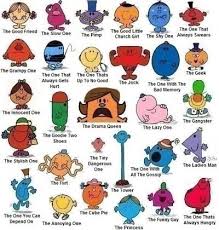 After listening to my friend’s recording, I started Googling around and searching for anything that anyone might have written about characteristics and traits of effective boards. I was especially intrigued by her question about incorporating personality testing into the board development process. After all, many workplaces are incorporating this type of assessment into their employee hiring process.
After listening to my friend’s recording, I started Googling around and searching for anything that anyone might have written about characteristics and traits of effective boards. I was especially intrigued by her question about incorporating personality testing into the board development process. After all, many workplaces are incorporating this type of assessment into their employee hiring process.
I didn’t really find much of anything that resonated, but there was some interesting stuff on Myers-Briggs personality testing that pertained to the non-profit sector. Here are some of the better links:
- Nonprofit People blog: “An Introduction to Myers-Briggs“
- Brad Rourke’s blog: “Myers-Briggs in the Nonprofit Workplace: How to Lead with J’s and P’s“
- Nonprofit Resource Network: Resources Page
While I suspect you may find these links interesting, they still didn’t help me process what my sleepy California friend had ignited in my head. And then I came across an online post at Ivey Business Journal titled “Profiling the Non-Profit Leader of Tomorrow“.
This article focused on the executive director as the linchpin to what my friend had identified. They identified 15 “must-have” attributes that a non-profit leader must possess in order to be successful. Those attributes are as follows:
 Competencies
Competencies
- Strategic thinker
- Relationship builder
- Collaborative decision-maker
- Entrepreneurial achiever
- Effective communicator
- Change leader
- Inspiring motivator
Personality Traits
- High integrity
- Adaptable/Agile
- Perseverant/Patient
- Interpersonal sensitivity
- Passionate about the mission
Knowledge/Expertise
- Financial acumen
- Deep sector-specific knowledge
- Understanding & valuing diversity
I suspect a number of these competencies and skill sets also can be applied to your board development process.
If I’ve piqued your curiosity — and I suspect that I have — then I encourage you to click-through to the Ivey Business Journal article and keep reading. Enjoy!
Take a good hard look in the mirror this morning. How many of these attributes do you possess? How do you know you possess them? Do you conduct 360 assessments asking for your employees’ feedback? If so, what do they say about you and these attributes? Does your board development process look for volunteers with these attributes? If so, what tools do you use to help identify these attributes?
In addition to sharing your thoughts about these questions in the comment box below, I welcome your thoughts about the question I asked earlier in this post about my friend’s online recording.
We can all learn from each other. Please take a minute out of your busy day to share with your fellow non-profit friends.
Here’s to your health!
Erik Anderson
Founder & President, The Healthy Non-Profit LLC
www.thehealthynonprofit.com
erik@thehealthynonprofit.com
http://twitter.com/#!/eanderson847
http://www.facebook.com/eanderson847
http://www.linkedin.com/in/erikanderson847

 Recently, I’ve been doing a lot of what I consider “Nonprofit 101” trainings focused on board roles and responsibilities. After talking with board members about their fiduciary responsibilities, they often push back on their role in fundraising. I’m becoming really good at giving them the “sympathetic smile,” which communicates that I’m hearing their fear but not giving them permission to wash their hands of their role in resource development.
Recently, I’ve been doing a lot of what I consider “Nonprofit 101” trainings focused on board roles and responsibilities. After talking with board members about their fiduciary responsibilities, they often push back on their role in fundraising. I’m becoming really good at giving them the “sympathetic smile,” which communicates that I’m hearing their fear but not giving them permission to wash their hands of their role in resource development. After all, how scary can it be to “tell stories,” right?
After all, how scary can it be to “tell stories,” right?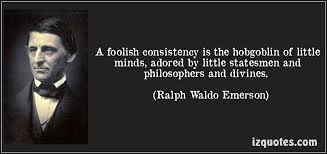 Welcome to O.D. Fridays at DonorDreams blog. Every Friday for the foreseeable future we will be looking at posts from John Greco’s blog called “
Welcome to O.D. Fridays at DonorDreams blog. Every Friday for the foreseeable future we will be looking at posts from John Greco’s blog called “ Well, huh? Let me see here. Every good planning process begins with an assessment /evaluation which springboards off into goal setting, strategy development and action planning. If the organization I just referenced hadn’t been so “foolishly consistent,” they would’ve seen the following:
Well, huh? Let me see here. Every good planning process begins with an assessment /evaluation which springboards off into goal setting, strategy development and action planning. If the organization I just referenced hadn’t been so “foolishly consistent,” they would’ve seen the following: The board members and executive director of the agency I reference in the example above certainly were “little“. I say this because their “foolish consistency” and unwillingness to do any assessment and planning had locked them into being a certain size. When you looked at their agency budget, they had brought in the same amount of revenue for the last 10 years.
The board members and executive director of the agency I reference in the example above certainly were “little“. I say this because their “foolish consistency” and unwillingness to do any assessment and planning had locked them into being a certain size. When you looked at their agency budget, they had brought in the same amount of revenue for the last 10 years.
 There are exceptions to my general rule of “no selling”. The Girl Scouts and Boy Scouts sell cookies and popcorn very well. Their troops, which are volunteer-led, rely on those sales for most of their troop activities. Good for them! There are also
There are exceptions to my general rule of “no selling”. The Girl Scouts and Boy Scouts sell cookies and popcorn very well. Their troops, which are volunteer-led, rely on those sales for most of their troop activities. Good for them! There are also

 I am of the opinion that those of us who still use the economy to explain our shortcomings are simply making excuses. In fact, let me take it a step further. Invoking the economy to explain your poor fundraising performance is nothing short of excuse making.
I am of the opinion that those of us who still use the economy to explain our shortcomings are simply making excuses. In fact, let me take it a step further. Invoking the economy to explain your poor fundraising performance is nothing short of excuse making.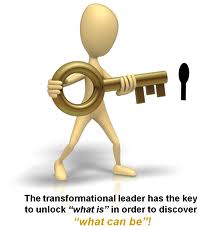 Empathize . . . they are grieving the lack of results from their collective efforts
Empathize . . . they are grieving the lack of results from their collective efforts When I engage non-profit organizations in board development related issues, it can be like simultaneously operating in two parallel and polar opposite universes. One universe exists where everyone is talking about how things are “supposed to be” done. This is described in the agency’s written board development plan. In the other universe, there are board members and staff sitting around a table talking about “some guy” they know without any discussion about board composition gap assessment, prospect lists, prospect evaluation or anything that sounds like process.
When I engage non-profit organizations in board development related issues, it can be like simultaneously operating in two parallel and polar opposite universes. One universe exists where everyone is talking about how things are “supposed to be” done. This is described in the agency’s written board development plan. In the other universe, there are board members and staff sitting around a table talking about “some guy” they know without any discussion about board composition gap assessment, prospect lists, prospect evaluation or anything that sounds like process. With this in mind, I am reminded of an old “Mondays with Marissa” post from a year ago titled “
With this in mind, I am reminded of an old “Mondays with Marissa” post from a year ago titled “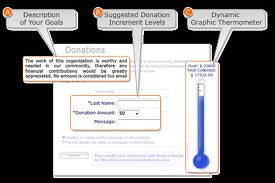 Jeff Bezos has been on my mind lately. Of course, he is the 49-year-old owner of Amazon.com, and this internet pioneer recently purchased one of the iconic old media newspapers — The Washington Post — for $250 million. It was no more than a few days after this announcement that I was talking to a non-profit board volunteer about fundraising when I was reminded of this famous Jeff Bazos quotation: “A company shouldn’t get addicted to being shiny, because shiny doesn’t last.”
Jeff Bezos has been on my mind lately. Of course, he is the 49-year-old owner of Amazon.com, and this internet pioneer recently purchased one of the iconic old media newspapers — The Washington Post — for $250 million. It was no more than a few days after this announcement that I was talking to a non-profit board volunteer about fundraising when I was reminded of this famous Jeff Bazos quotation: “A company shouldn’t get addicted to being shiny, because shiny doesn’t last.” I am a huge proponent of using technology and integrating it into your non-profit organization’s fundraising program, but it shouldn’t be introduced in a way that undercuts the other best practices embedded in your resource development plan.
I am a huge proponent of using technology and integrating it into your non-profit organization’s fundraising program, but it shouldn’t be introduced in a way that undercuts the other best practices embedded in your resource development plan.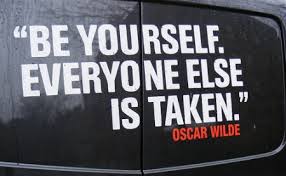 Welcome to O.D. Fridays at DonorDreams blog. Every Friday for the foreseeable future we will be looking at posts from John Greco’s blog called “
Welcome to O.D. Fridays at DonorDreams blog. Every Friday for the foreseeable future we will be looking at posts from John Greco’s blog called “ However,
However,  More than a year ago, I stumbled upon a fun article published in the Stanford Social Innovation Review (SSIR) titled “
More than a year ago, I stumbled upon a fun article published in the Stanford Social Innovation Review (SSIR) titled “ So, the conversations I’ve been referencing throughout this post have to do with board development and not the actual revenue models.
So, the conversations I’ve been referencing throughout this post have to do with board development and not the actual revenue models. I am sicker than a dog and my mind is foggy, which is why I couldn’t post yesterday. However, the thought of not posting two days in a row is inconceivable to me. So, I find myself sitting here staring at a blank screen wondering what I should type. Rather than wax poetic about a current event or best practice, I’m going to share with you a question that another blogger touched upon a few months ago. Ever since reading it, I just haven’t been able to get it out of my head. Are you ready? Because here it is:
I am sicker than a dog and my mind is foggy, which is why I couldn’t post yesterday. However, the thought of not posting two days in a row is inconceivable to me. So, I find myself sitting here staring at a blank screen wondering what I should type. Rather than wax poetic about a current event or best practice, I’m going to share with you a question that another blogger touched upon a few months ago. Ever since reading it, I just haven’t been able to get it out of my head. Are you ready? Because here it is: